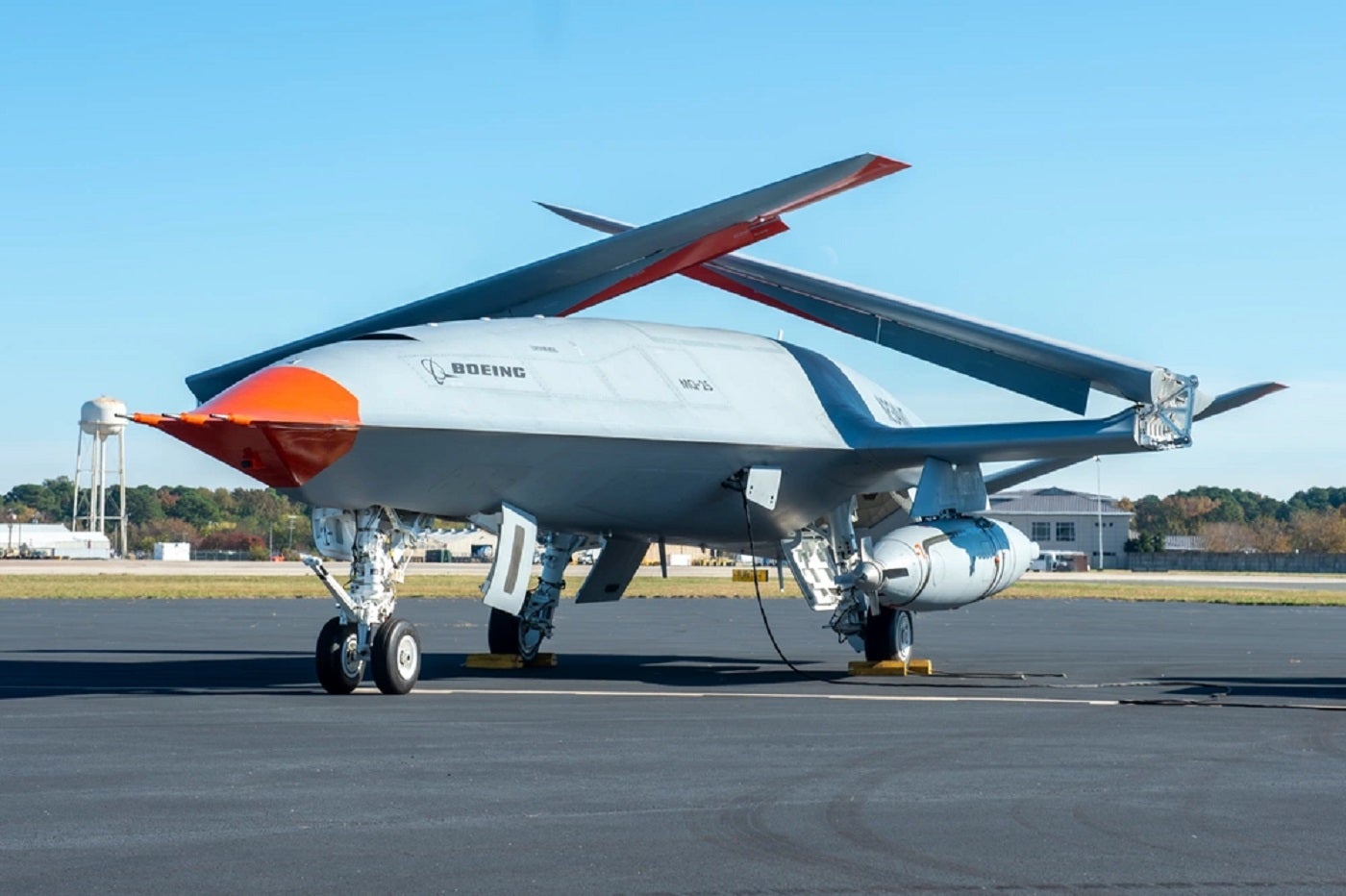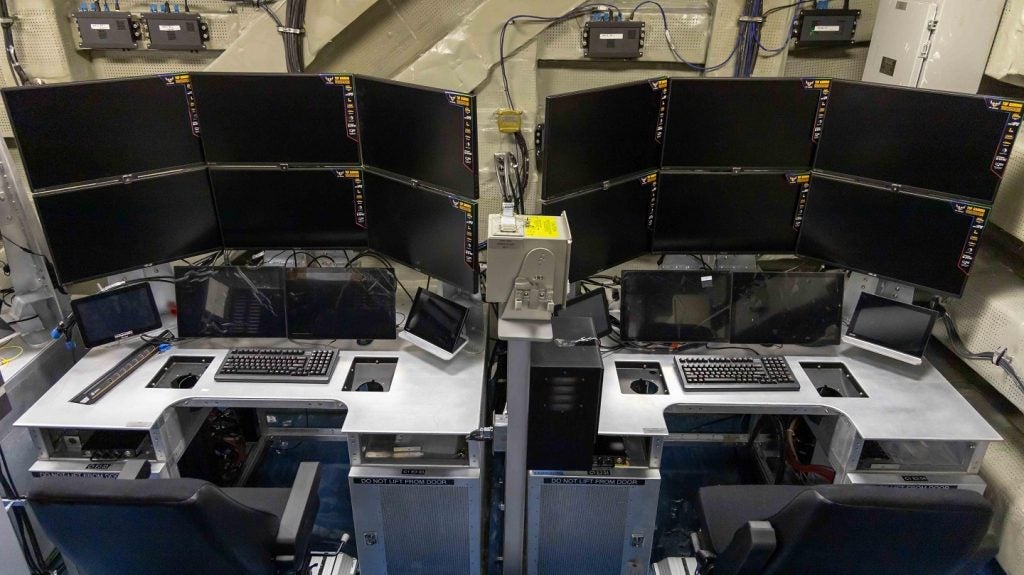
The US Navy has equipped the USS George H.W. Bush with the first-ever Unmanned Air Warfare Center (UAWC). This installation marks a step towards integrating unmanned systems like the MQ-25 Stingray into carrier operations.
The US Navy has stepped forward in unmanned warfare by installing the first Unmanned Air Warfare Center (UAWC) aboard the USS George H.W. Bush (CVN 77). This control hub is designed to manage the operations of MQ-25 Stingray drones, the Navy’s upcoming unmanned aerial refuelling platform. However, the implications of this installation extend beyond refuelling, pointing towards a future where unmanned systems play an increasingly central role in naval operations.
The UAWC is a control room and a fully integrated Unmanned Carrier Aviation Mission Control System (UMCS) MD-5E Ground Control Station (GCS), equipped with technology to control unmanned aerial vehicles (UAVs) from the heart of a carrier.

The Navy’s plans for the UAWC reflect a shift towards autonomy in military operations. While the MQ-25 Stingray’s primary mission will be aerial refuelling, the UAWC has the potential to manage a range of future unmanned systems, including collaborative combat aircraft that could form the backbone of the “Air Wing of the Future.”
Boeing’s MQ-25 Stingray has completed several refuelling missions with the US Navy, demonstrating its capability as the first operational carrier-based unmanned refuelling aircraft. The MQ-25 T1 test asset has refuelled an F/A-18 Super Hornet, an E-2D Advanced Hawkeye, and an F-35C Lightning II fighter jet.
“CVN 77’s UAWC lays the foundation for how the US Navy will operate and control unmanned aircraft, and perhaps other unmanned vehicles, with UMCS,” said Capt. Daniel Fucito, Programme Manager of Unmanned Carrier Aviation (PMA-268). “These systems will initially support the MQ-25 but also future unmanned systems such as Collaborative Combat Aircraft that comprise the Air Wing of the Future.”
The project spanned several years and involved collaboration across multiple Navy departments, shipyards, and defence contractors. Lockheed Martin’s Skunk Works provided the Multi Domain Combat System (MDCX), the technology powering the GCS. The successful installation aboard CVN 77 is a template for future carriers, with similar systems planned for other vessels shortly.
Beyond its immediate operational benefits, the UAWC indicates the Navy’s direction.
Early next year, the USS George H.W. Bush will conduct at-sea testing of the UAWC’s networks, a step in validating the system’s capabilities. Air Vehicle Pilots (AVPs) from the Unmanned Carrier-Launched Multi-Role Squadron (VUQ) 10 will take the helm, operating the GCS to control simulated air vehicles in an exercise.
“The upcoming tests will be a historic moment for naval aviation,” said Joe Nedeau, PMA-268 UMCS lead. “For the first time, AVPs will control unmanned aircraft from an aircraft carrier, marking a significant leap in our operational capabilities.”
“This will be the first time the AVPs from Unmanned Carrier-Launched Multi-Role Squadron (VUQ) 10 will operate the MD-5 from an aircraft carrier,” said Joe Nedeau, PMA-268 UMCS lead. “They will use the actual GCS hardware and software aboard CVN 77 to communicate with a simulated air vehicle in the lab in Pax River.”







